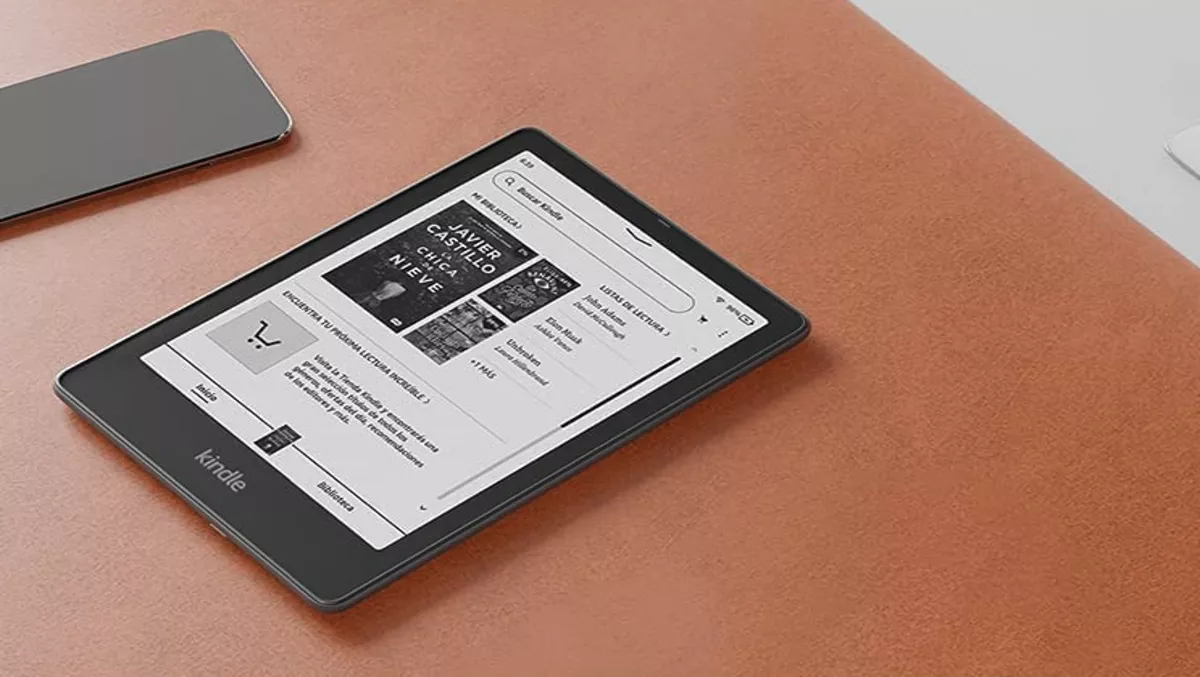
Hands-on review: Amazon Kindle Paperwhite Signature Edition
I have been using the Kindle app on my tablets for several years, but this has been my very first venture into using the Kindle hardware. It is not a tablet. It only does black and white. In almost every respect it works like a book, apart from the fact that it weighs next to nothing, fits in my hand perfectly, and is soothing on my eyes. It also trucks on for up to ten weeks between charges, something my table can only dream of doing.
I received the Kindle late last year. After weeks of use, I was wondering when it would ever need charging. I have been catching up with some of my favourite authors, E.E. "Doc" Smith of Lensman fame, and Robert E. Heinlein, one of the best SF writers ever. Consequently, I read so much that I didn't bother going anywhere near a laptop to write a review, until the boss dropped me a cleverly worded memo which had me leaping into action.
Looking at Amazon's website, I learned that this little wonder could go up to ten weeks without needing a charge. The warm light that is gentle on one's eyes is also adjustable. I did notice a big difference from using the app on my tablet devices. The Kindle Paperwhite gives more an experience of looking at the page of a book. Once you decide on your favoured font and size, you're away.
Changing pages is easy. I changed the same way I would a normal book, except without having to lick my favoured finger. The other advantage was that reading became a one-handed affair; a feat not possible on my 13-inch tablet.
Thousands of books are available on this 6.8 inch marvel. In a relatively short space of time, I have accumulated quite a few, and the beauty of it is that I'm not further cluttering up my book-shelves. As I am planning a long-haul excursion in a year or so, I can see the Kindle being a vital part of my carry-on luggage.
I wondered how other users found the Kindle, so when no-one was looking, I peeked at customer reviews on retailers' sites. The only gripe I found was from one reader who complained about the lack of "dark-mode," a feature I had never considered attractive in reading a book. Most commented on the lightness and convenience of the size, as well as the ease of use on the eyes. I decided to delve deeper into the mystery of how a Kindle display seemed easier on the eyes than a tablet.
The answer lies in a technology called E-Ink. Tiny microcapsules of liquid are contained between layers of film. They will be white or black, depending on whether they are positively or negatively charged. This technology is easy on the eyes because they do not cycle the way that tablet screens do.
The technology is also less draining, allowing your Kindle to carry on for up to ten weeks, which is a long time between drinks, dear readers.
All this goes to explain why I was able to carry on in my usual fashion when I'm reading a real hard-to-put-down page turner. The E-Ink technology has continued to progress to include colour since 2016. I guess that we will need to watch this space and see how e-Books continue to develop.
I only had one difficulty, and that was finding how to switch from one book to another. Don't ask me how I accomplished this. It all points back to my "OK Boomer" status, making me a non-digital native. However, once I figured it out on my own, I was happily moving to and fro between books.
A quick glance at PriceSpy put the Amazon Kindle Paperwhite Signature Edition at just over $275. Pulling out my finger-calculator, I quickly deduced that the Kindle pays for itself in less than ten book purchases. My experience on Kindle is that e-Books generally sell for a fraction the cost of a paper book. I shall now retire, remove my socks, and calculate how many trees I will save in a year of reading.


